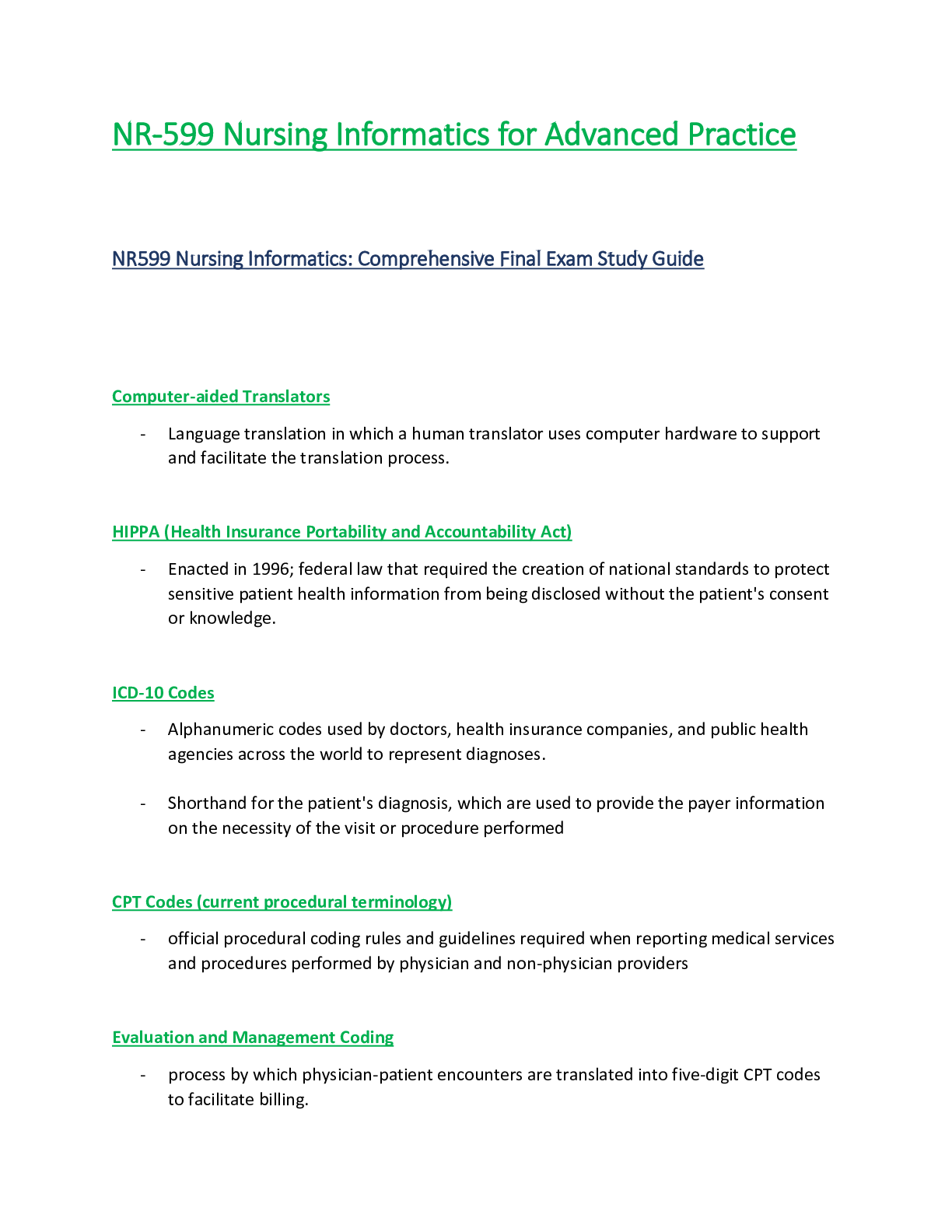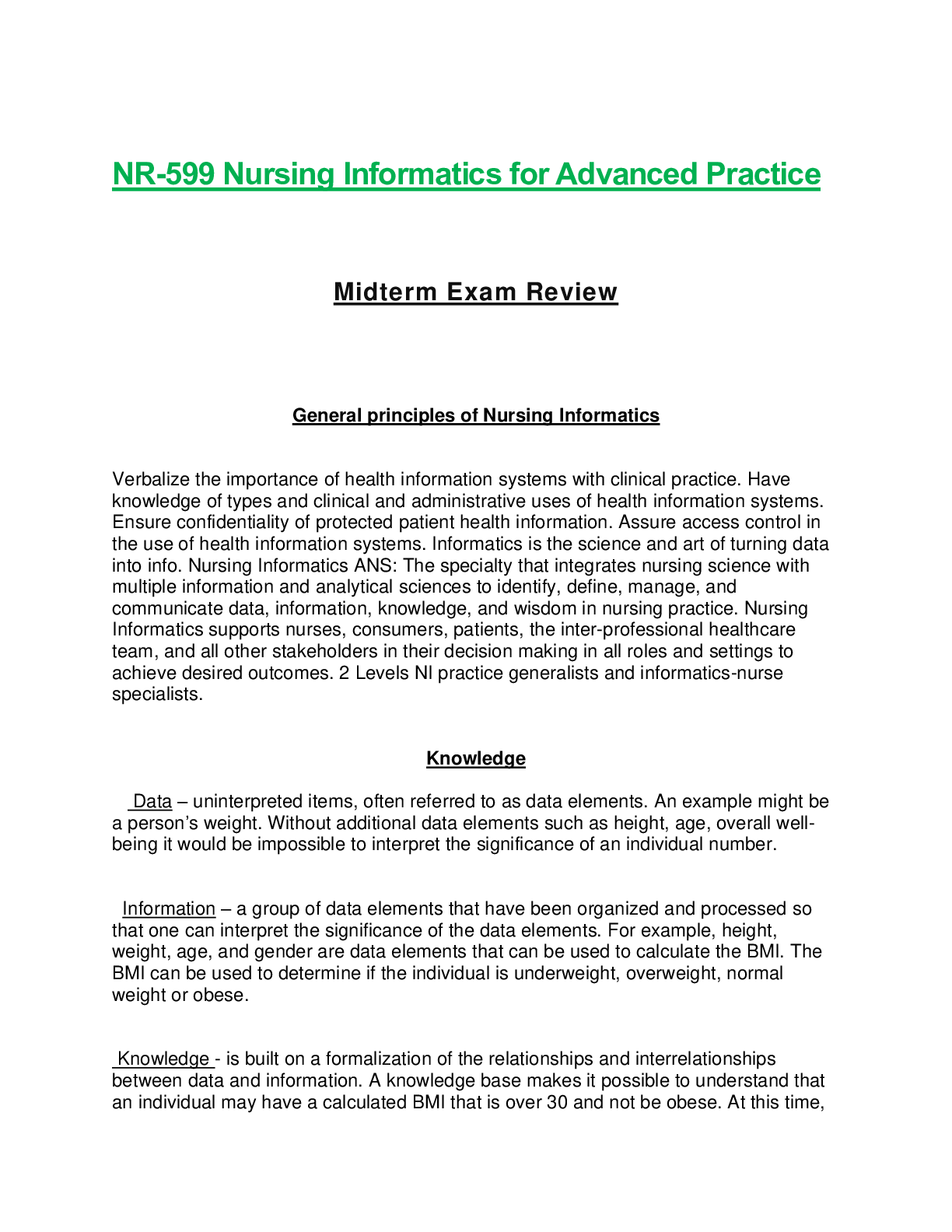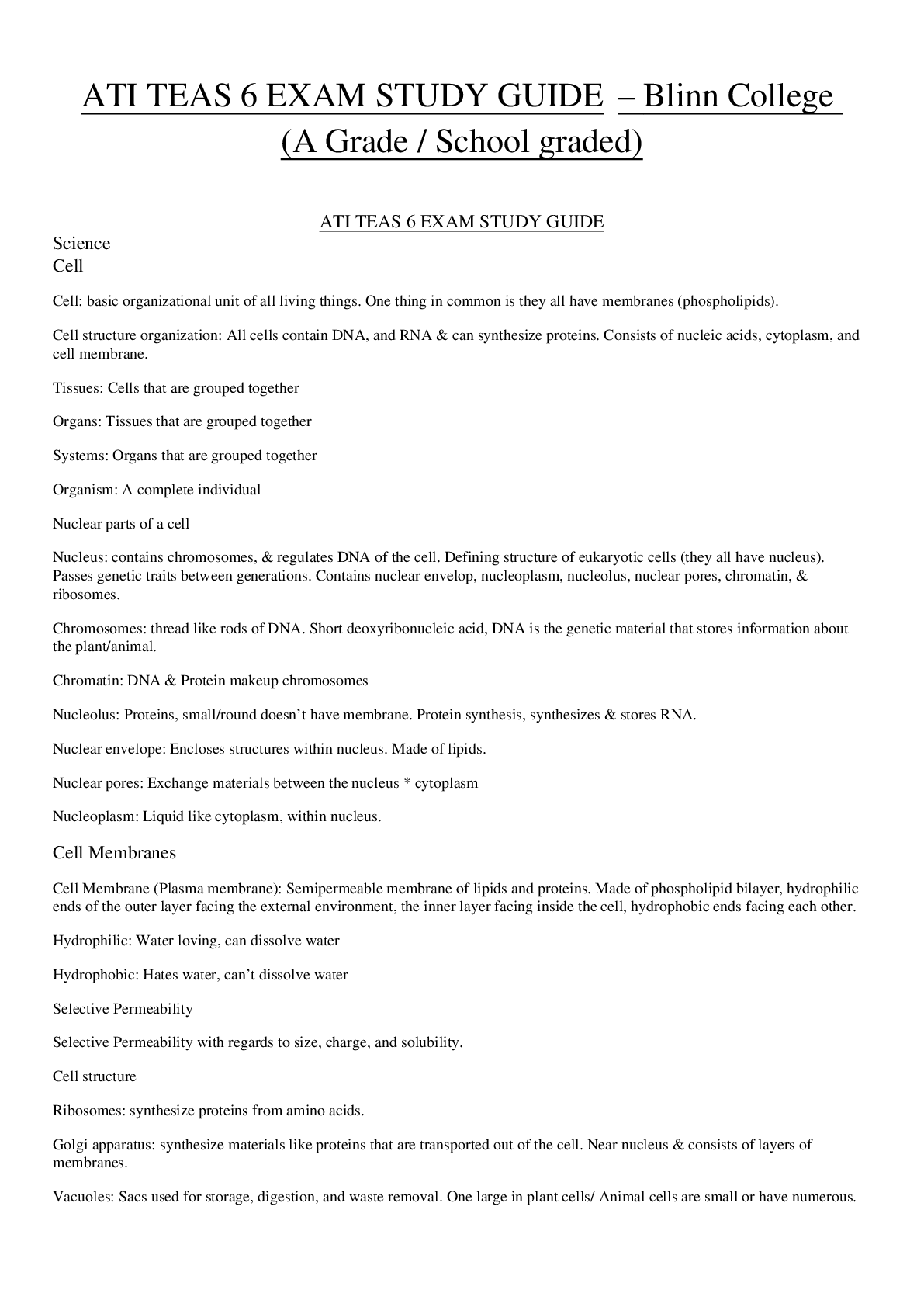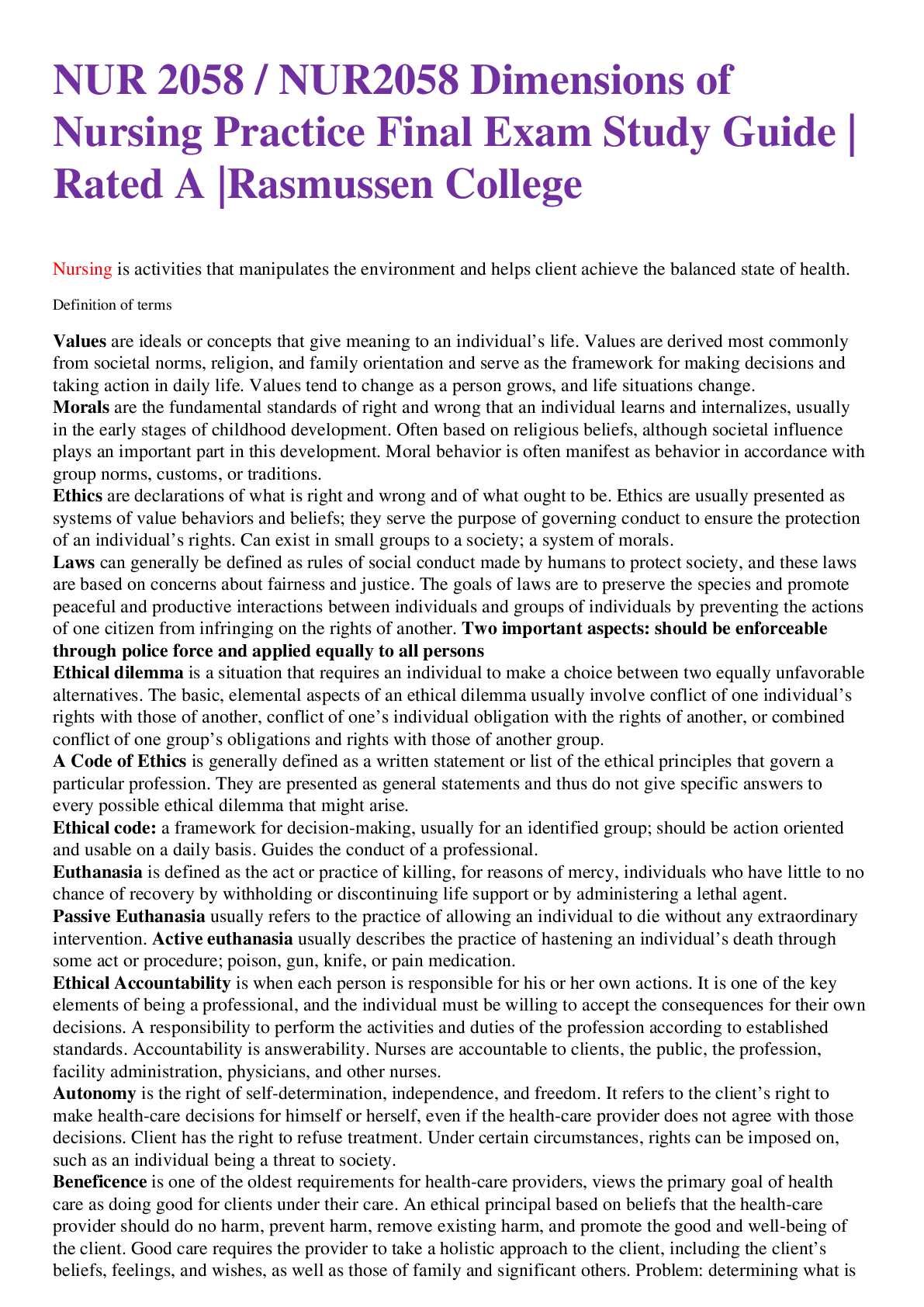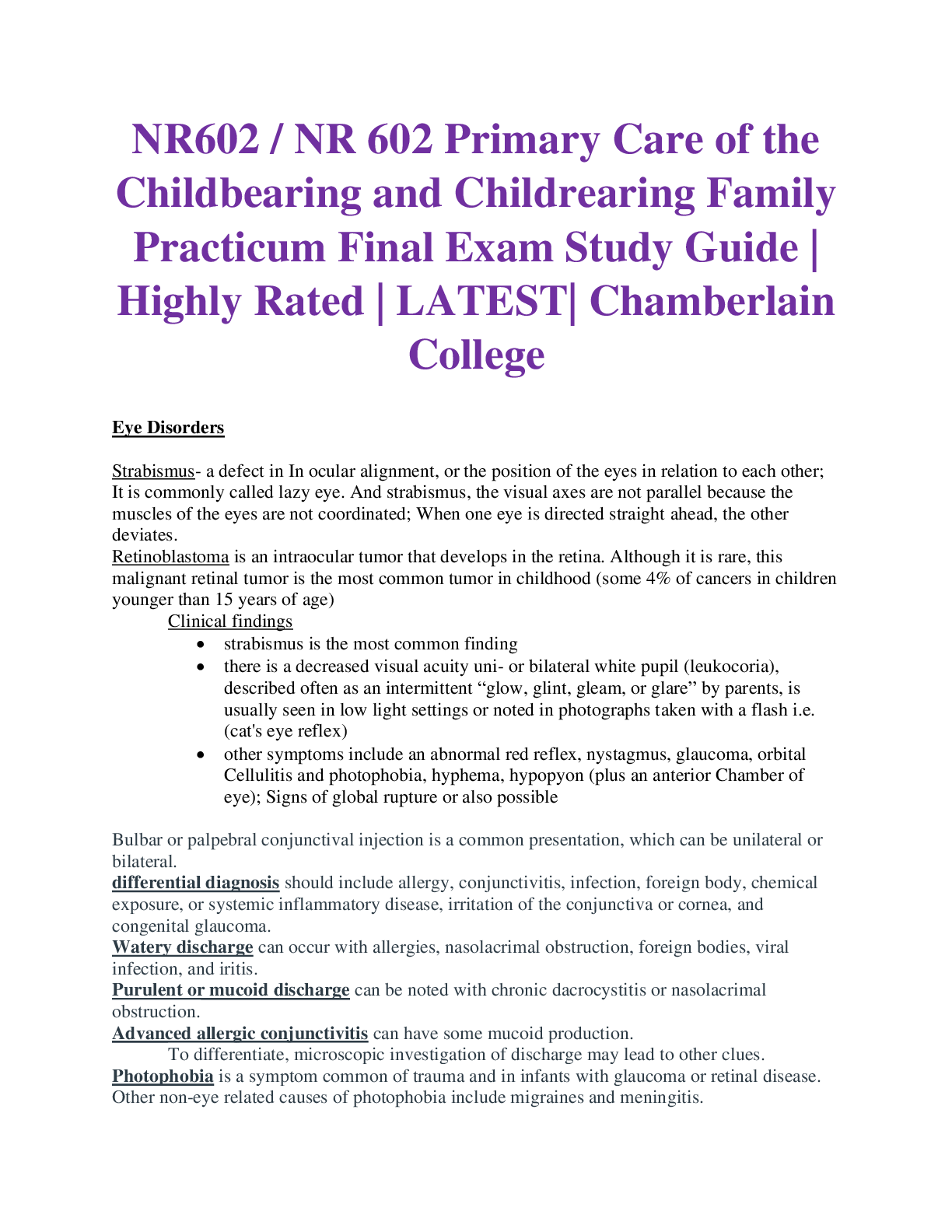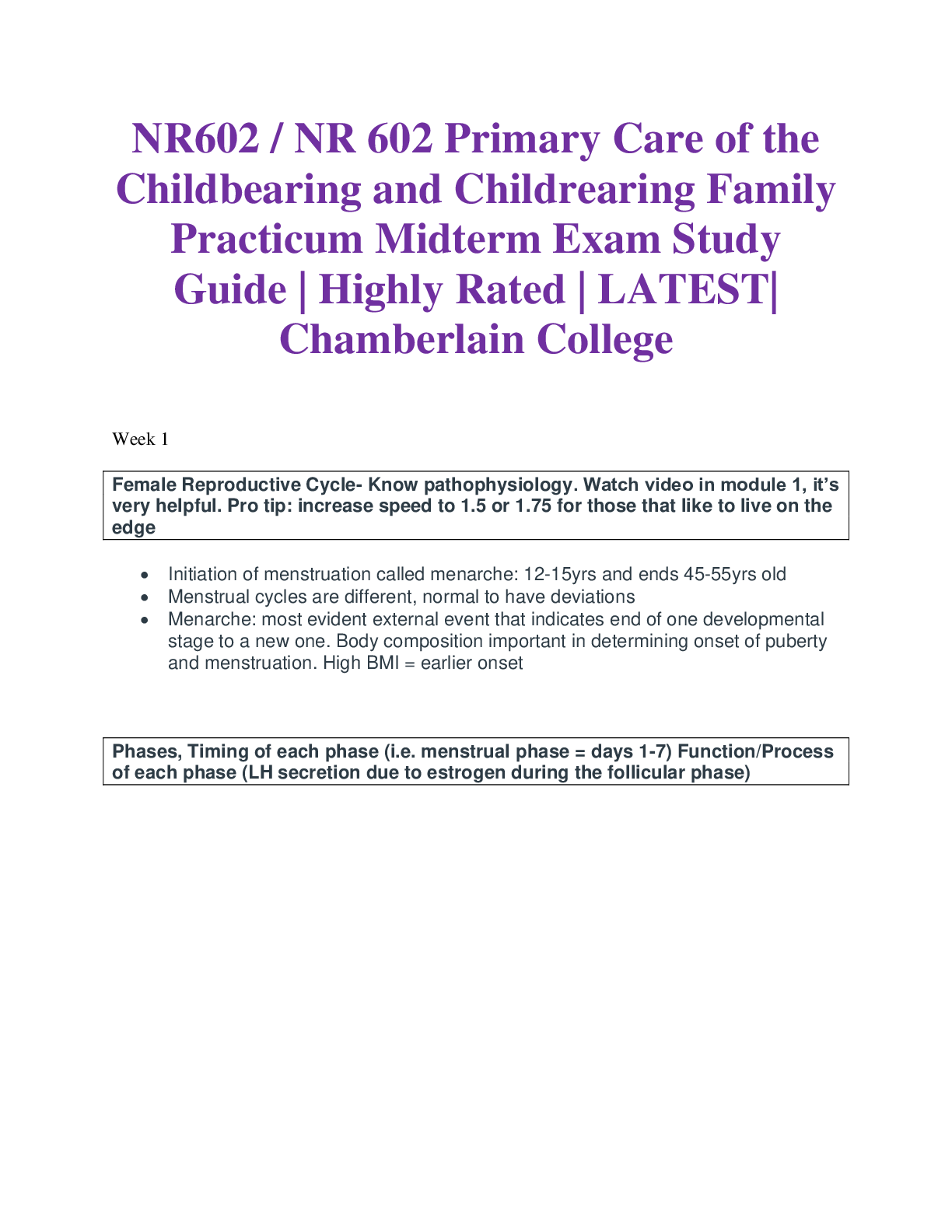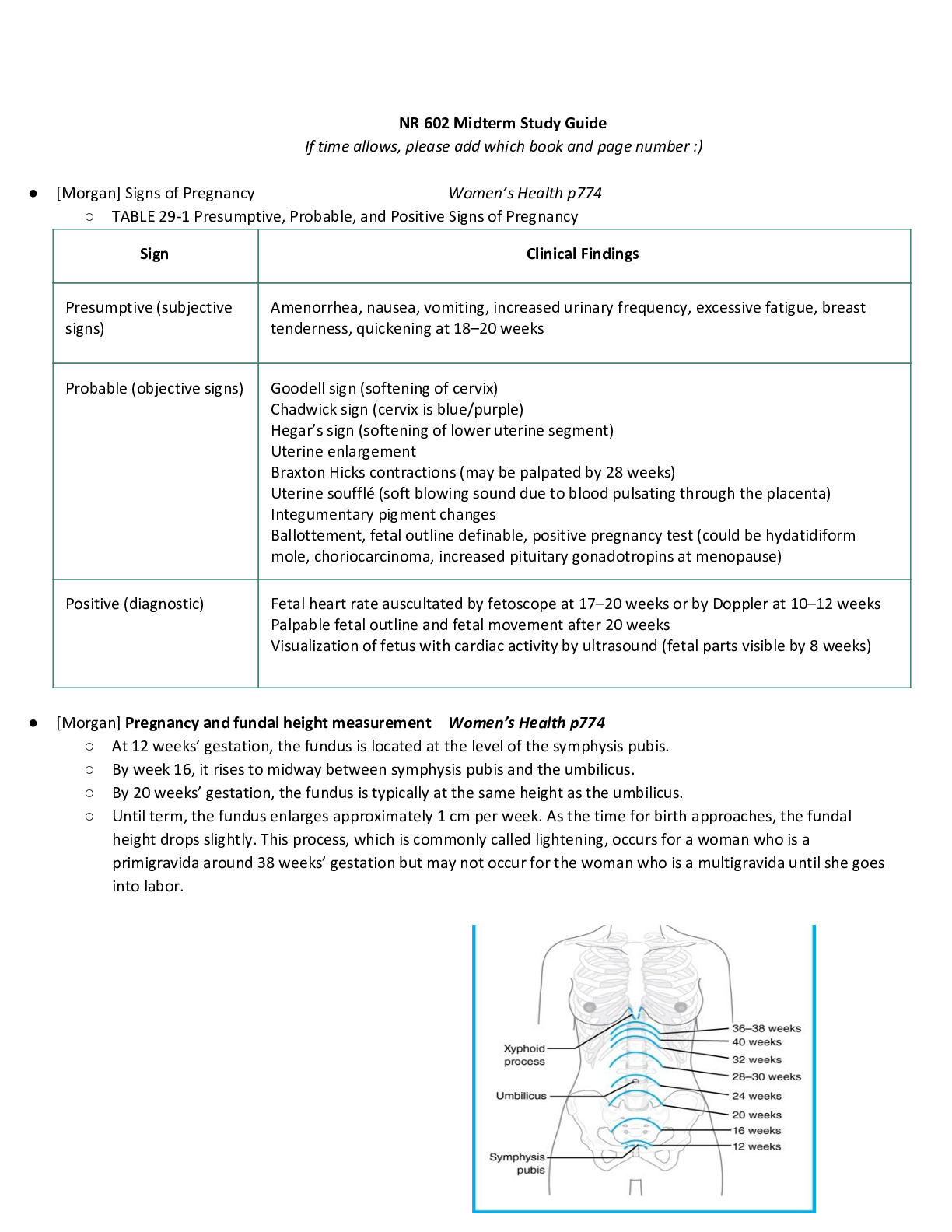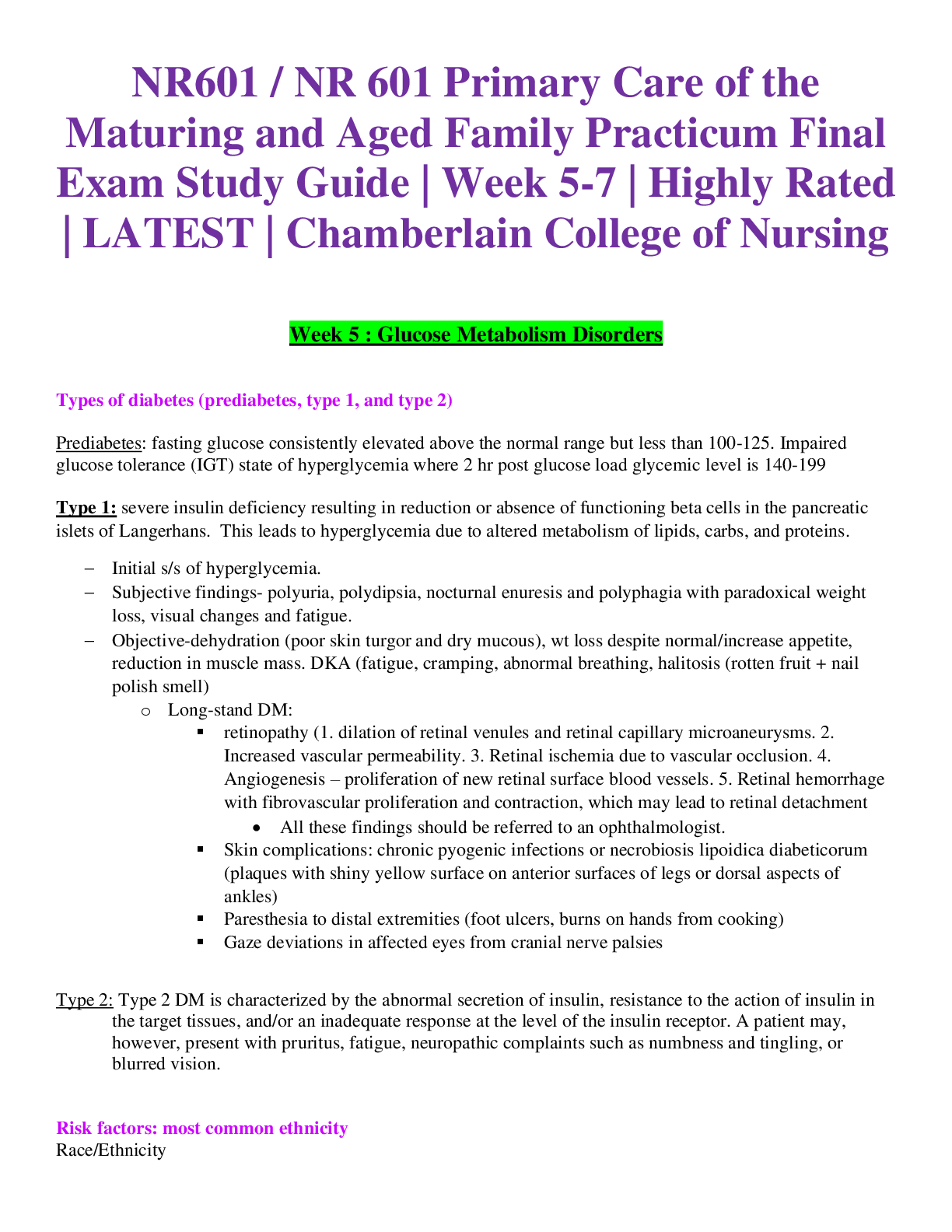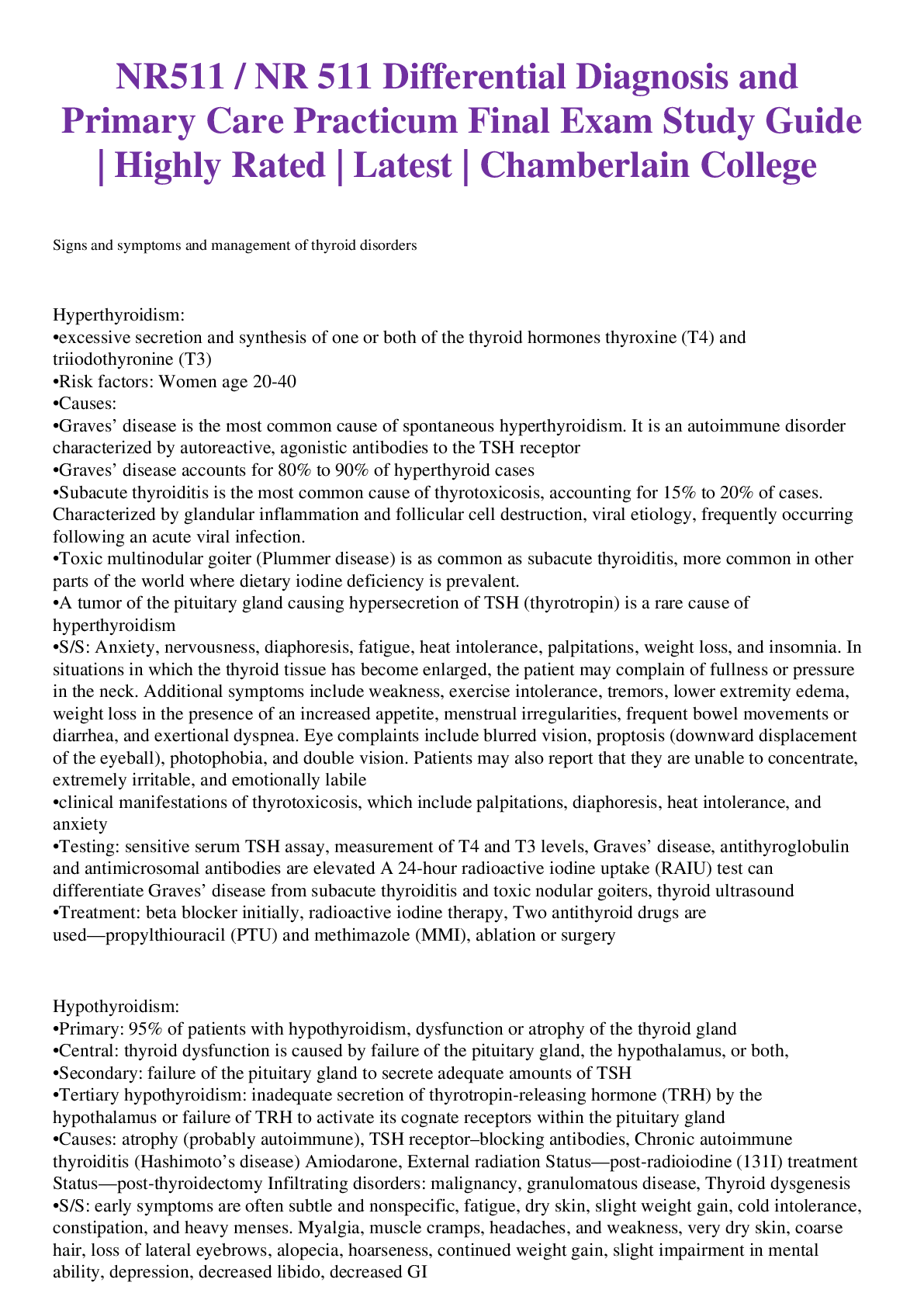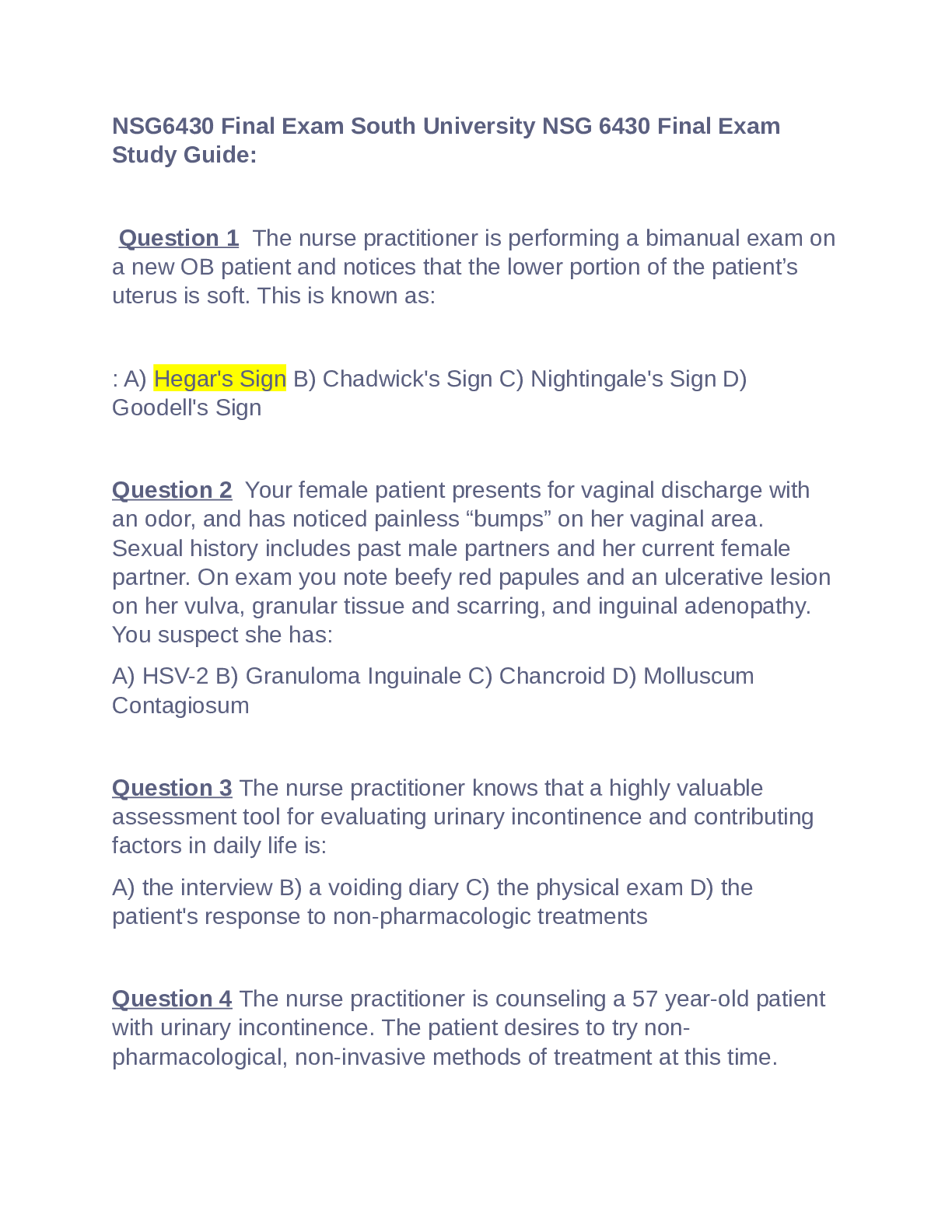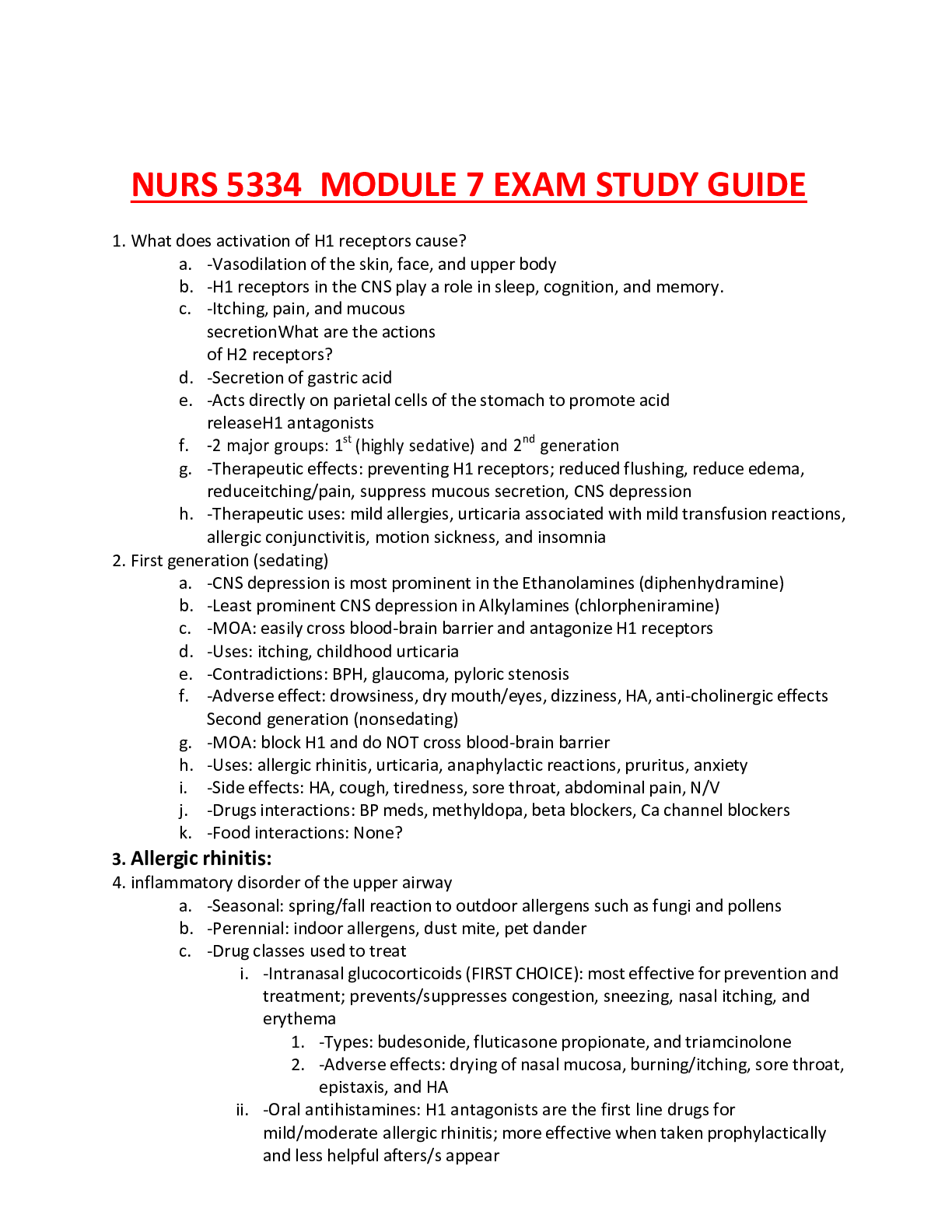*NURSING > STUDY GUIDE > Full Latest Updated NR511 Final Exam Study Guide Graded A+ (All)
Full Latest Updated NR511 Final Exam Study Guide Graded A+
Document Content and Description Below
NR511 Final Exam Study Guide Topics: o Common M/S disorders o Common spine disorders o Metabolic disorders o Endocrine disorders o Wounds, lacerations & bites o Common hematological disorders ... o Common male GU disorders o Testicular disorders Chapters + lectures: Wk 5: o Chapter 52: Common Musculoskeletal Complaints o Chapter 53: Spinal Disorders o Chapter 54: Soft-Tissue Disorders o Lectures o Hollier o DE Wk6: o Chapter 57: Glandular Disorders (p. 880-897 only) o Chapter 59: Metabolic Disorders o Chapter 73: Common Injuries (p.1210-1223 only) 1212-1213 table 73.1 o Review thyroid lecture again o Lectures o Hollier o DE Wk7: 1 NR511 Final Exam Study Guide o Chapter 46: Nocturia in Men (p. 682) & Testicular Pain (p. 685) o Chapter 49: Prostate Disorders o Chapter 50: Penile & Testicular Disorders o Chapter 61: Hematological Disorders o Lectures o Hollier o DE Completion of study guide: IIII 1. Signs and symptoms and management of musculoskeletal sprains/strains/dislocations Signs and symptoms and management of musculoskeletal sprains/strains/dislocations Sprains: stretching or tearing of ligaments that occurs when a joint is forced beyond its normal anatomical range First degree- stretching of ligamentous fibers Second degree- partial tear of part of the ligament with pain and swelling Third degree- complete ligamentous separation Sprain- sudden injury or fall that caused acute pain and swelling that got worse over a few hours, redness and bruising, active and passive ROM decreased. Radiography to rule out fx. Strain: muscle injury caused by excessive tensile stress placed on a muscle that results in stiffness and decreased function -effects muscle or tendon that connects a muscle to a bone, complain of “pulled muscle,” severe cases cause inflammation, swelling, weakness and loss of function-surgery may be needed Management: PRICE (protect, rest, ice, compression, elevation), limitation of activity, physical 2 NR511 Final Exam Study Guide therapy, NSAIDS, referral to ortho Dislocation- complete separation of 2 bones that form a joint Very painful and cause immobility, need immediate medical attention Referral to orthopedics for possible surgery or reduction with application of cast or splint. four cardinal signs of inflammation (erythema, warmth, pain, or swelling) -SPEW 2. Signs and symptoms and management of spinal disorders (spondylosis, stenosis, etc.) Cervical Spondylosis- neck stiffness, mild aching discomfort with activity. Pain and limited ROM occur with lateral rotation and lateral flexion of the neck toward the affected side. Weakness shoulder abduction- C5. Bicep weakness- C6. Tricep weakness-C7.Myelopathy- leg weakness, gait disturbance, balance problems, difficulty performing fine motor tasks, loss of bowel and bladder. Treatment- cervical traction, PT, pain relievers. Surgery for Myelopathy. Low back pain-Tenderness and decreased range of motion. Positive straight leg test. TreatmentNSAIDS, muscle relaxants, opioids, surgical, self-care, spinal manipulation Stenosis-pseudoclaudication causing radicular pain in the calves, buttocks, and upper thighs of one or both legs. Symptoms progress from a proximal to distal direction. Walking or prolonged standing causes pain and weakness in buttocks and legs. Stooping over helps relieve pain. Positive Romberg. Reflexes diminished. With bowel or bladder symptoms, sphincter tone may be decreased Management- surgical decompression. NSAIDS, folic acid, vitamin b12. PT-flexing the spine.Bicycling. Intermittent use of NSAIDs may be helpful, as well as folic acid or vitamin B12 supplementation in some cases depending on results of laboratory tests. Management revolves around physical therapy or an exercise program that focuses on flexing the spine. Flexion of the spine increases intraspinal volume. Bicycling is one exercise that is done with the spine in flexion. Improving abdominal muscle tone lifts the pelvis anteriorly and flexes the lumbar spine. Reduction of intra-abdominal fat is critical to achieving the objective. 3 NR511 Final Exam Study Guide Thus, weight loss may be pivotal. Lumbar flexion exercises increase spinal canal volume. Examples include exercise on all fours, arching the back, or in the fetal position. Exercises that extend the spine should be avoided (swayback). 3. Recognition and immediate management of cauda equina syndrome Immediate management of cauda equina syndrome. (P. 829) Cauda equina syndrome is a medical EMERGENCY and requires immediate decompression. If Cauda equina is confirmed, surgical lumbar decompression is necessary to halt neurological deterioration unless surgery is contraindicated for other medical reasons. *Rational on Davis Edge question: Low back pain accompanied by acute onset of urinary retention or overflow incontinence, loss of anal sphincter tone or fecal incontinence, loss of sensation in the buttocks and perineum, and motor weakness in the lower extremities is a red flag for cauda equina syndrome or severe neurologic compromise. Perianal numbness. Cauda equina compression is characterized by bilateral lower extremity weakness, anesthesia, or paresthesia of the perineum and buttocks (saddle anesthesia). There may or may not be bowel or bladder incontinence or bladder retention. When there is neurologic deficit affecting the bowel or bladder, these changes may not be reversed with surgical decompression, 4. Maneuvers and expected findings with joint pain (knee, shoulder, wrist, etc.) Neck pain-Spurling’s. Shoulder pain-Apley scratch test(reaching the scapula). Internal and external flexion. Internal and external abduction. Pain with abduction= early supraspinatus tendinitis and subacromial bursitis=early rotator cuff injuries. Wrist and hand-allen’s test= radial and ulnar arteries. Phalens test=median nerve compression. Tinel’s sign assess for compression neuropathy – tapping over nerve. Finkelsteins test- de Quervains disease. Thumb between finger and point. Knee Pain= Mcmurray, apprehension sign, bulge sign, inspect/palpate to assess effusion. Lachman, drawer sign – ACL, Thumb test - PCL MCL, LCL test are valgus and varus Tennis elbow cup coffee cup sign CTS-NSAIDs not effective 4 NR511 Final Exam Study Guide Achillies rupture – Thompson test 5. Initial assessment of FOOSH injury in correlation to anatomical location of radial head bone Lisa Callahan FOOSH - Falling On an Out Stretched Hand. After falling on an outstretched hand patients present after trauma with pain and swelling in the distal forearm or wrist. Numbness may be present if the medial nerve is affected. The mechanism of injury will often provide important clues to the diagnosis. The examination begins with gentle palpation to locate the area of point tenderness and includes a thorough neurovascular assessment. A radiograph of the wrist (including an oblique view) may be necessary to rule out fracture. Common fractures are the Colles fracture of the distal radius and the navicular (scaphoid) fracture of the anatomical snuffbox. It is not unusual to have a navicular fracture missed on radiography, so an orthopedic referral should be provided when the presenting complaint is pain and trauma to the soft-tissue area of the anatomical snuffbox. Scaphoid injury [Show More]
Last updated: 1 year ago
Preview 1 out of 46 pages

Reviews( 0 )
Document information
Connected school, study & course
About the document
Uploaded On
Mar 19, 2022
Number of pages
46
Written in
Additional information
This document has been written for:
Uploaded
Mar 19, 2022
Downloads
0
Views
43



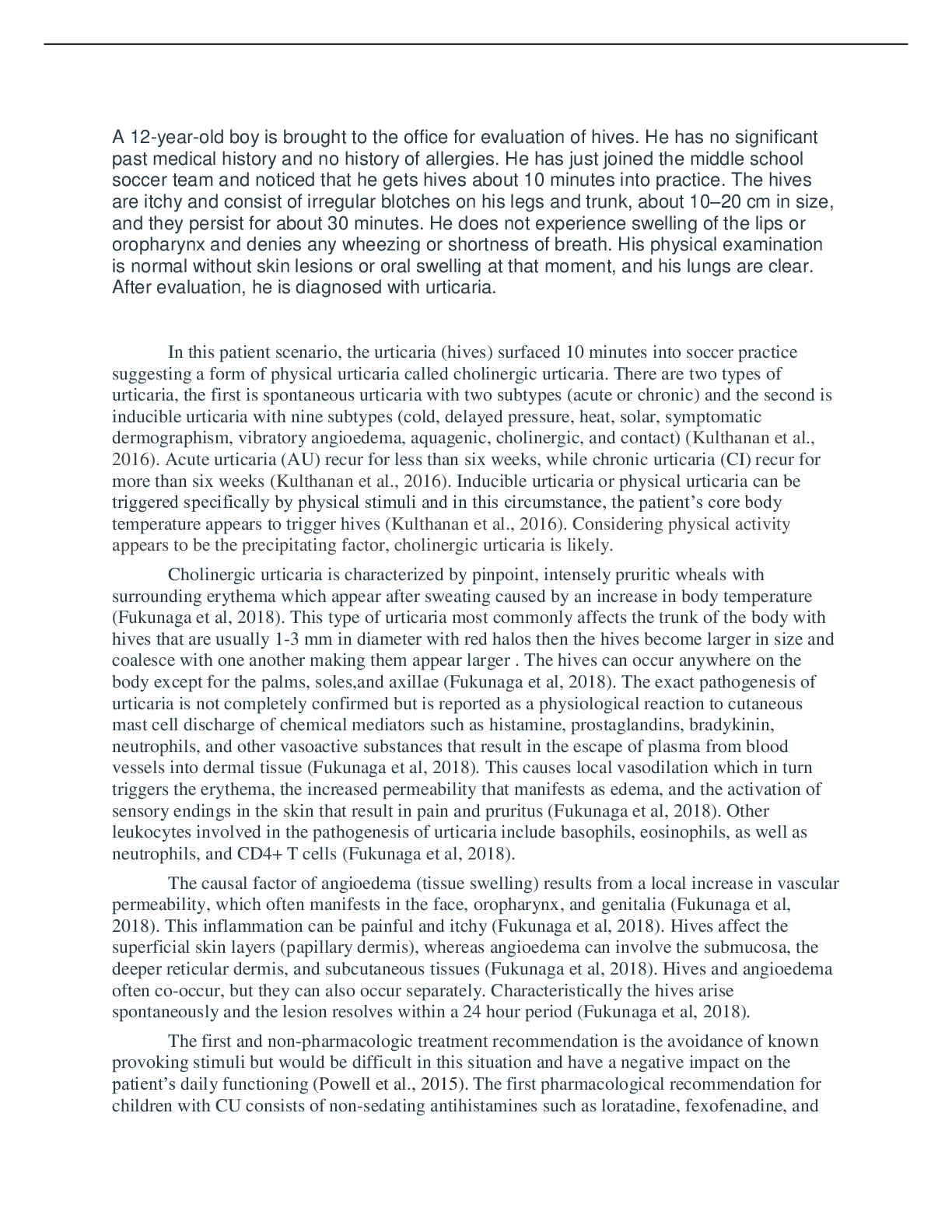
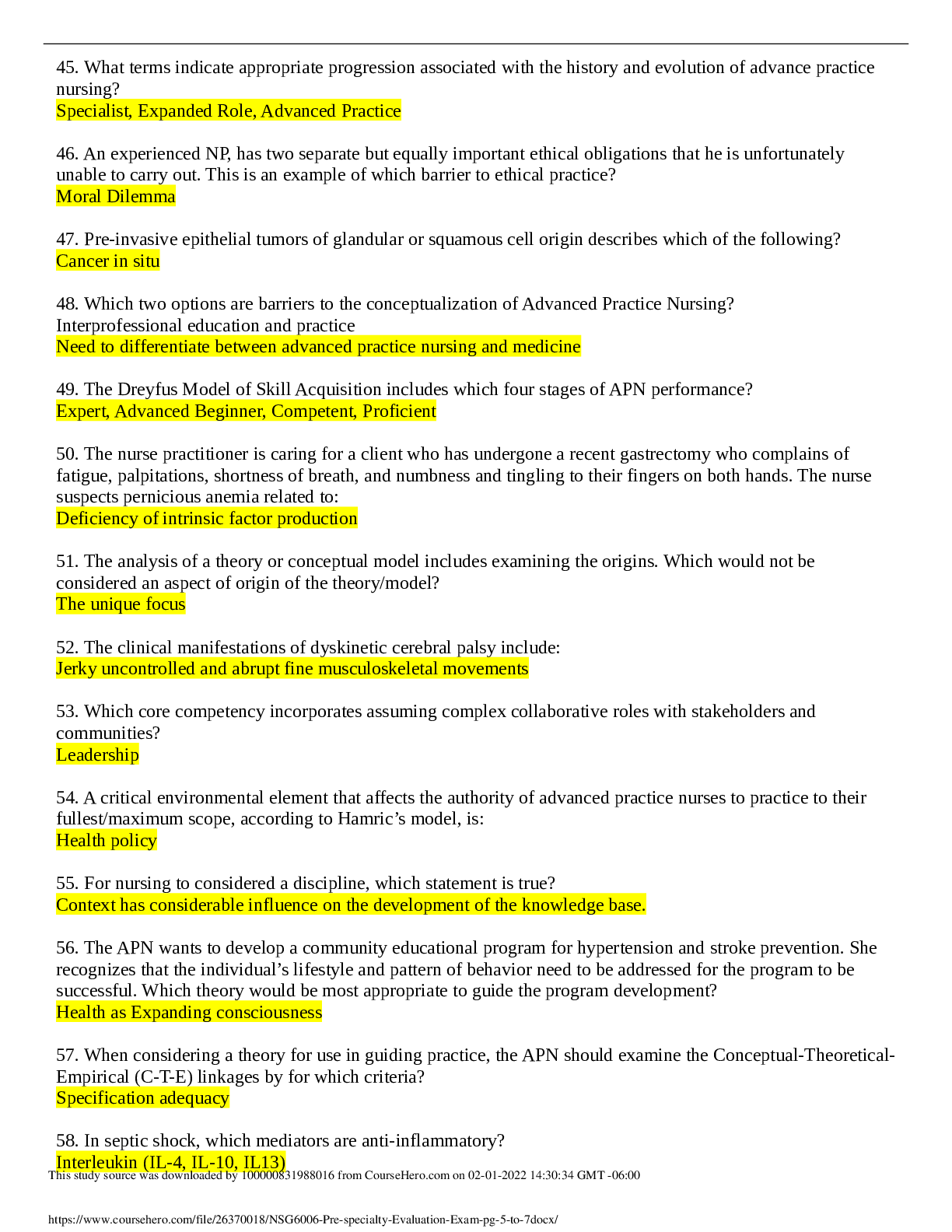


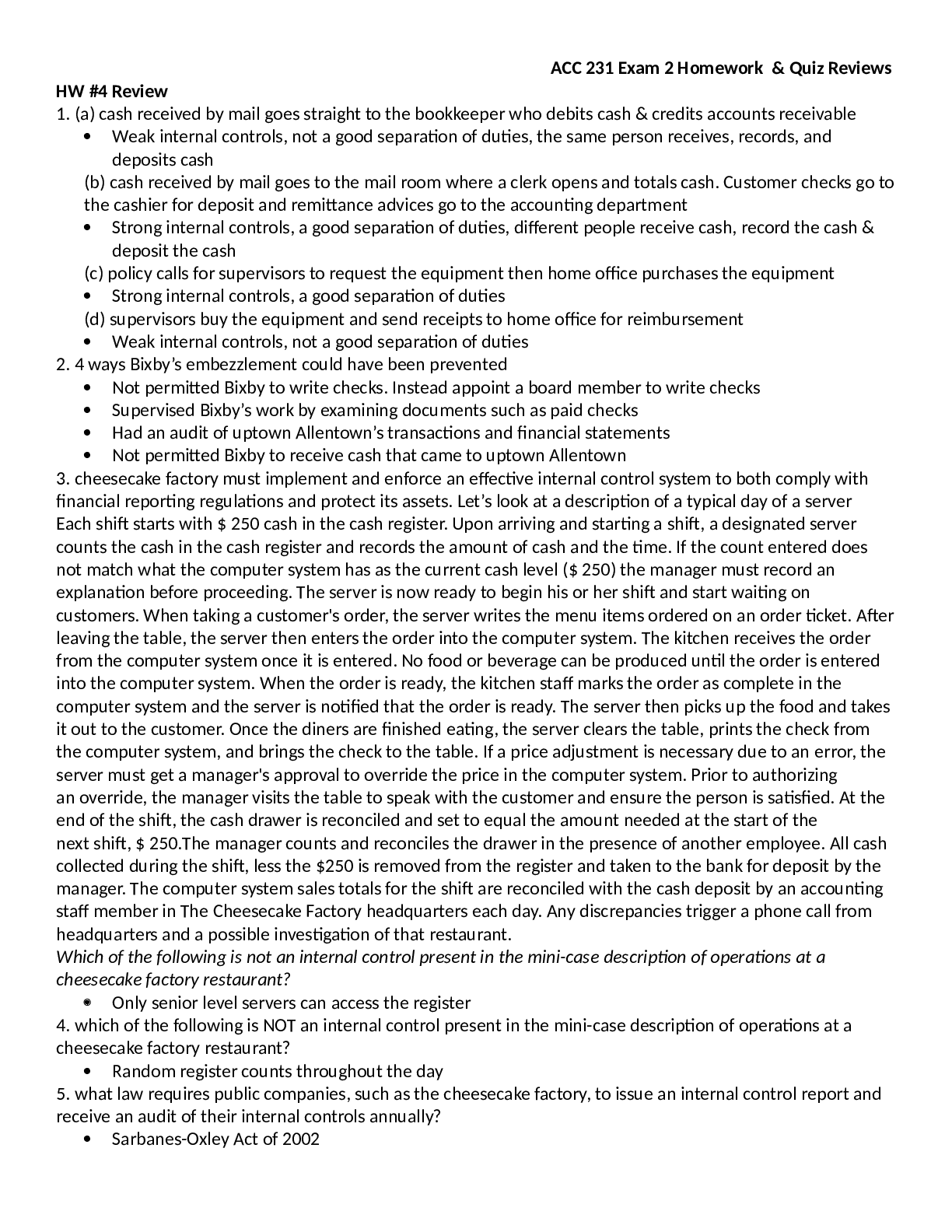

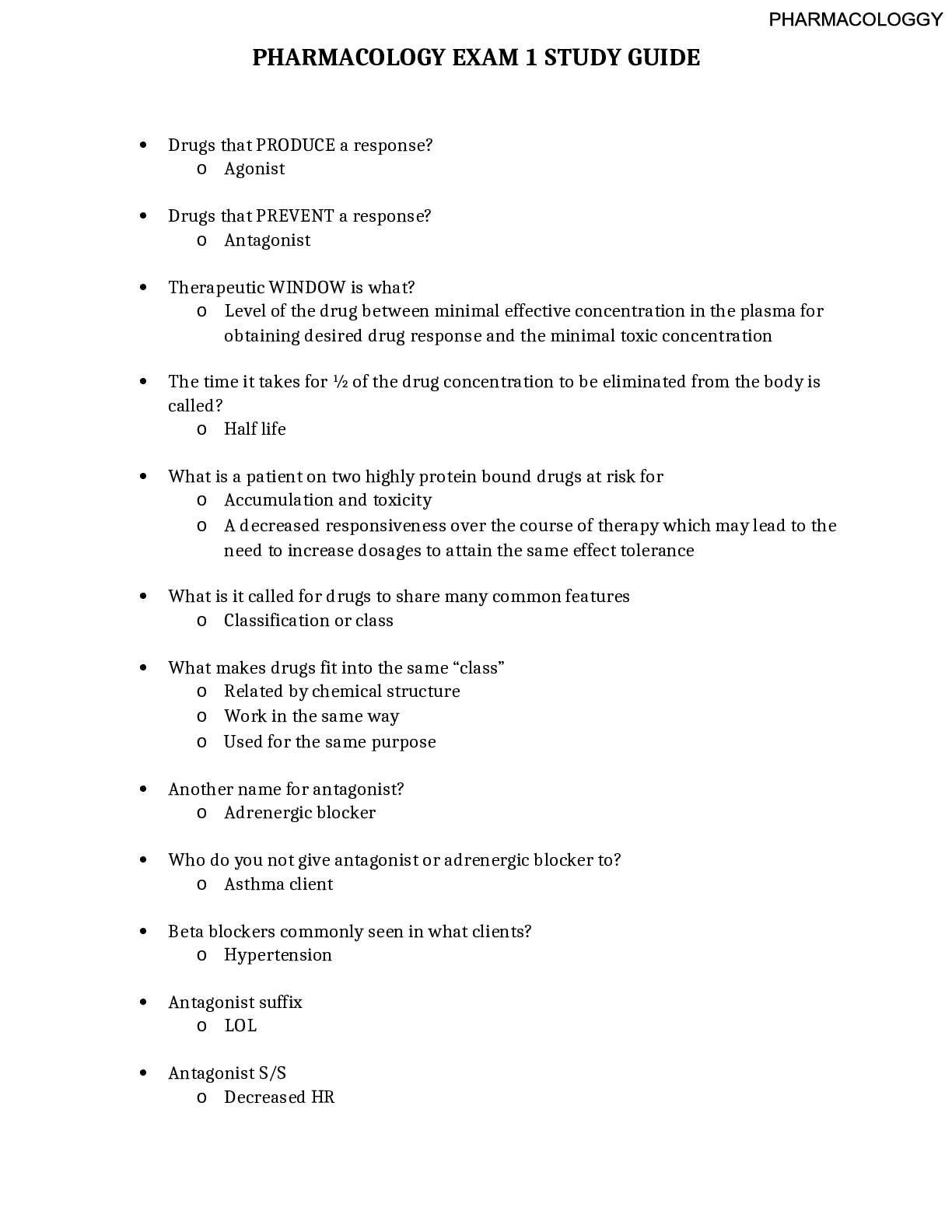
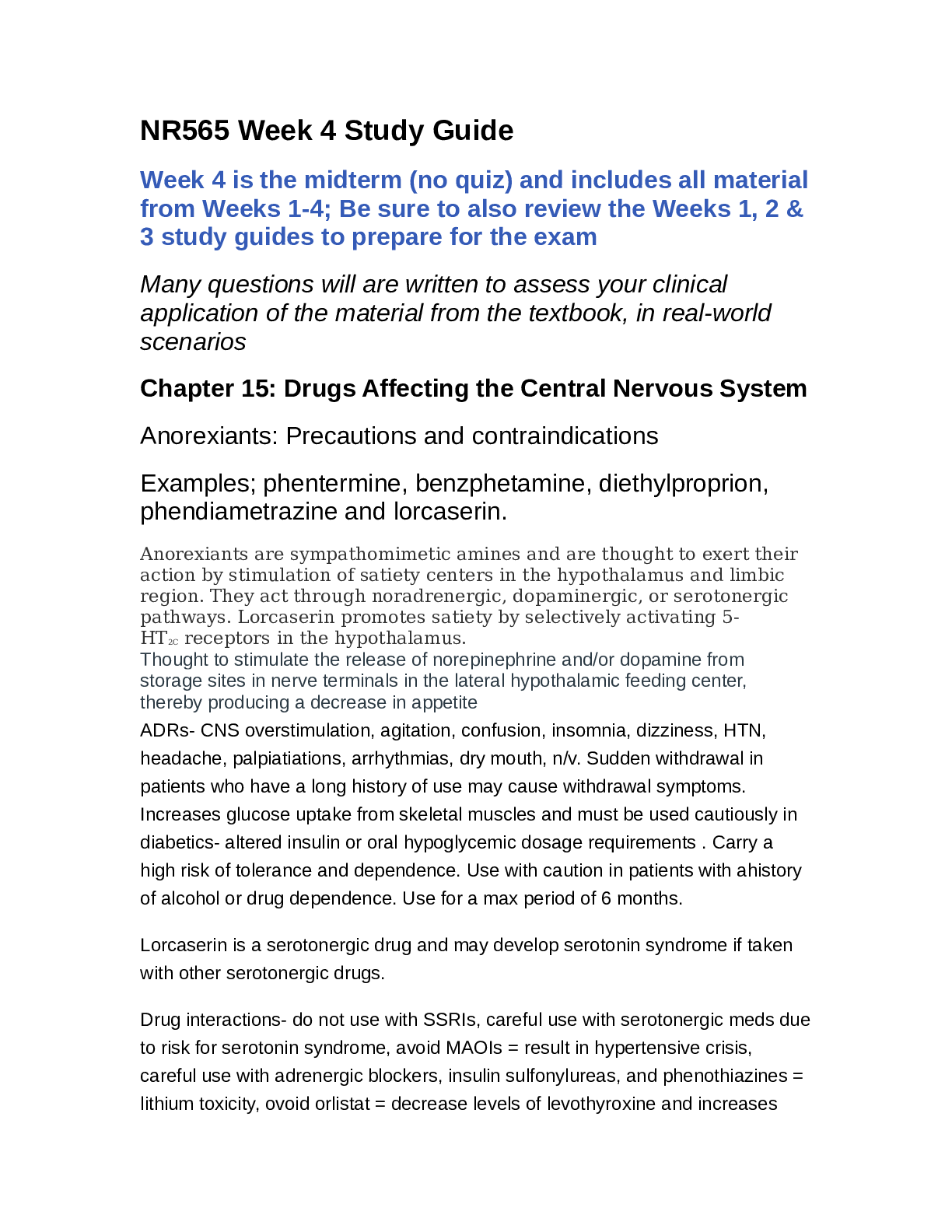



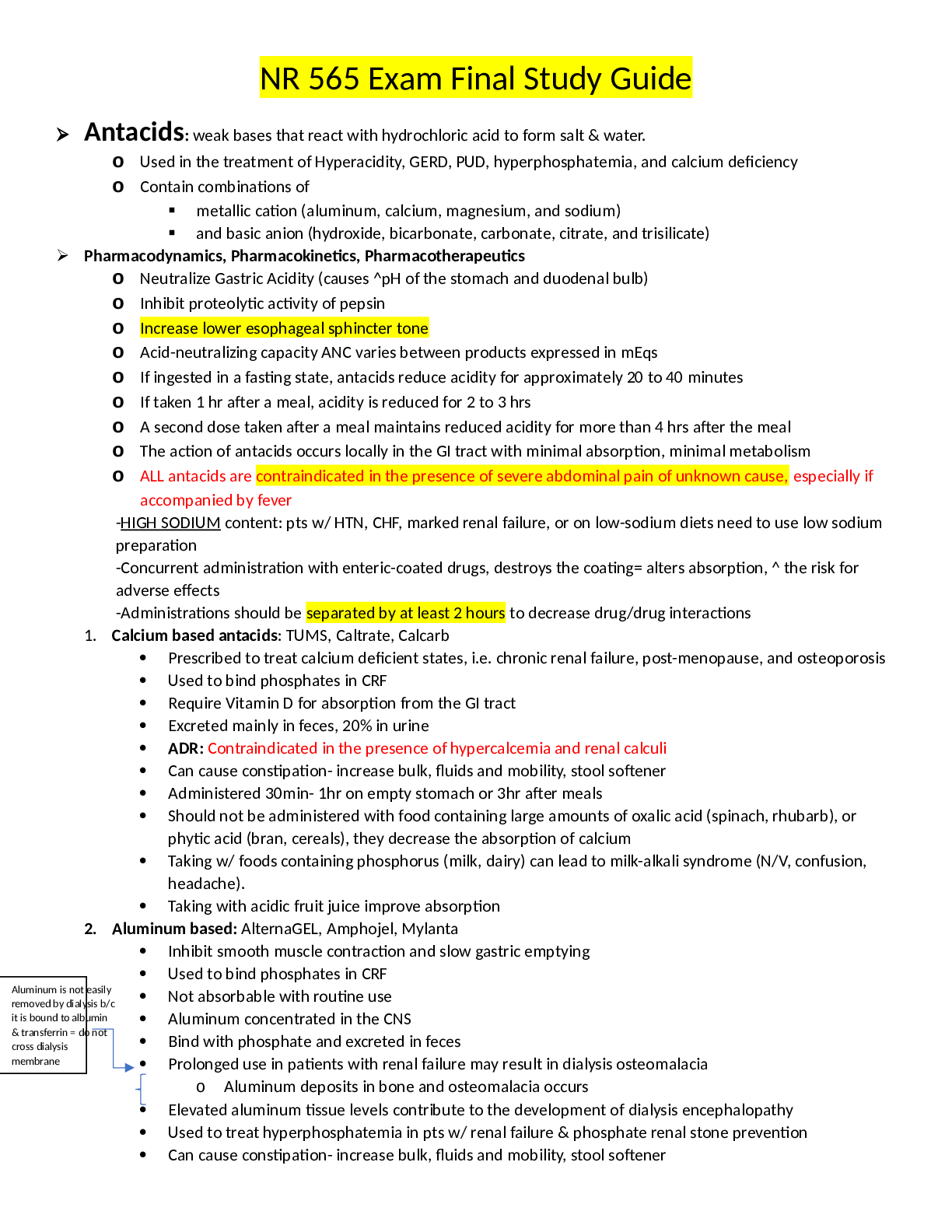
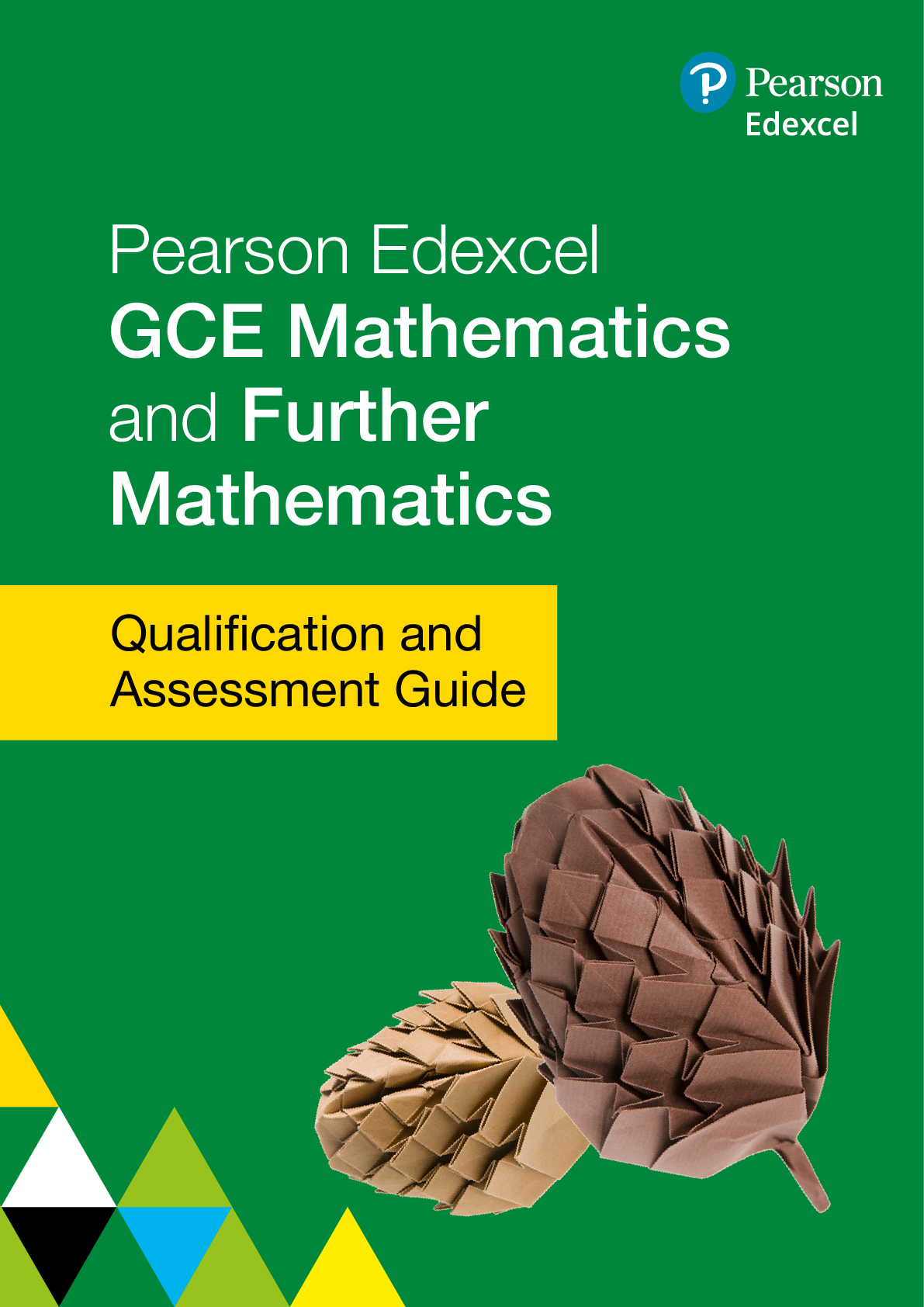
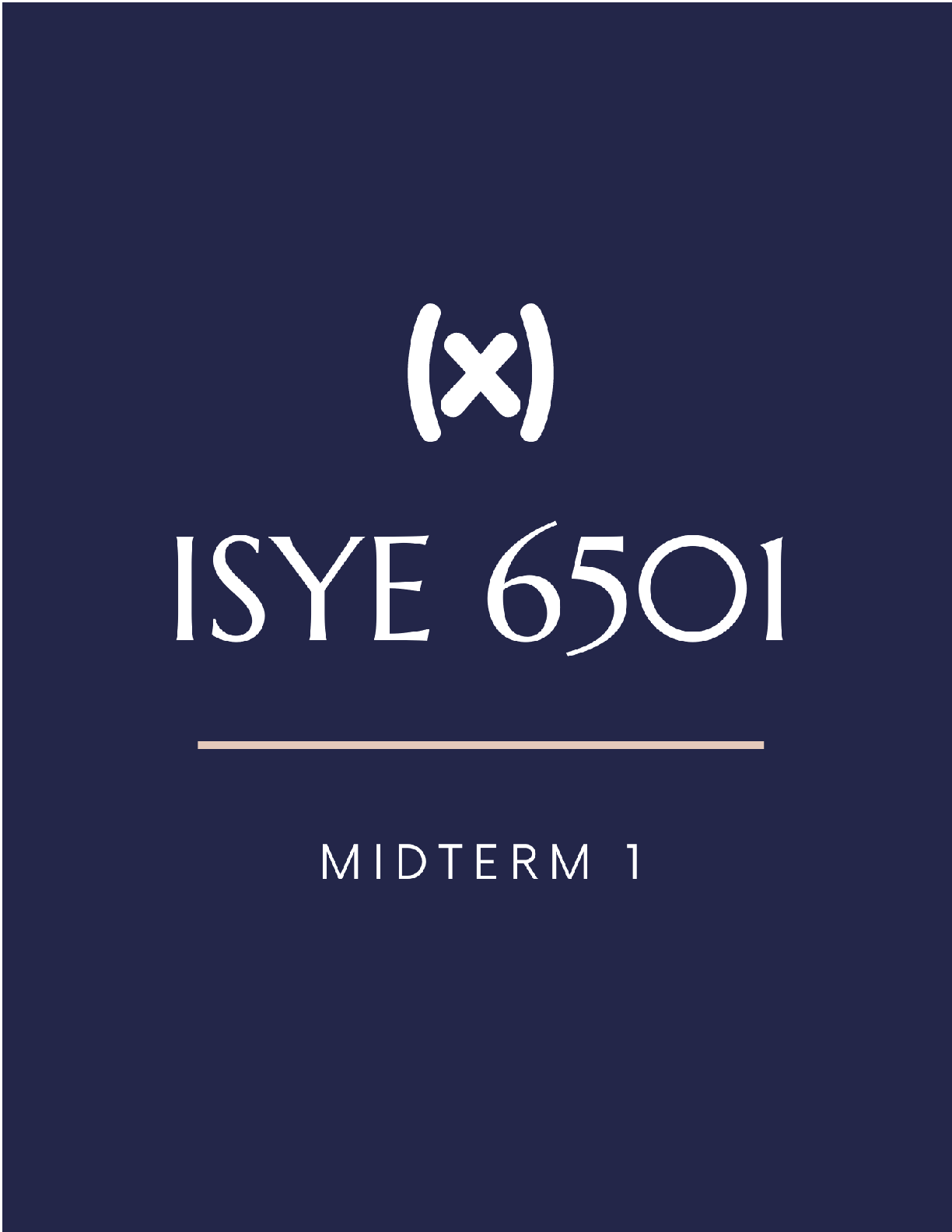



 Rasmussen College.png)
